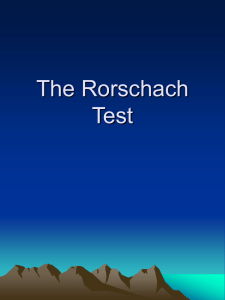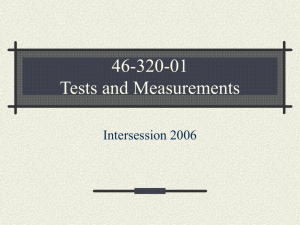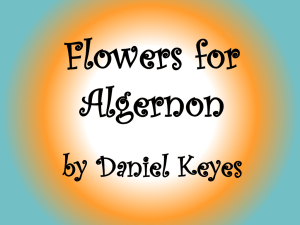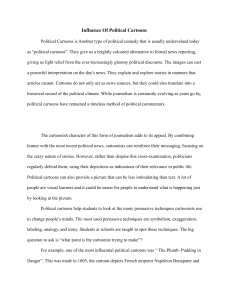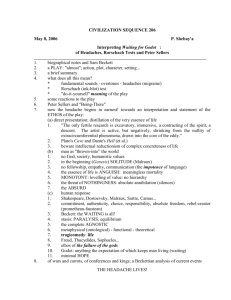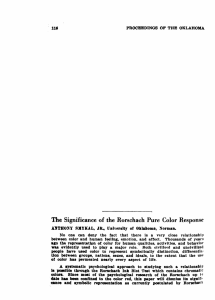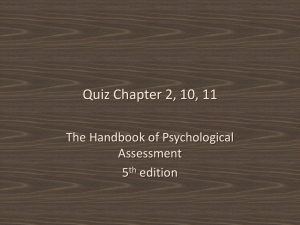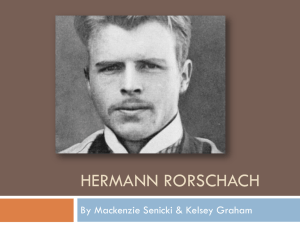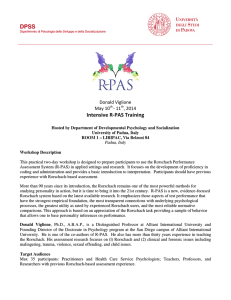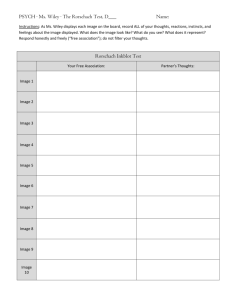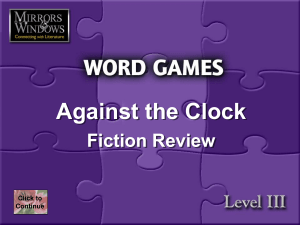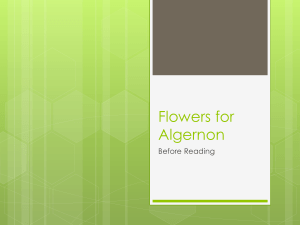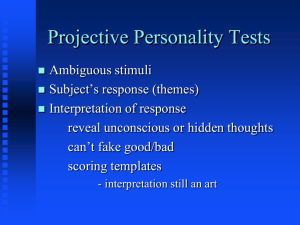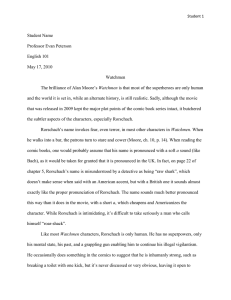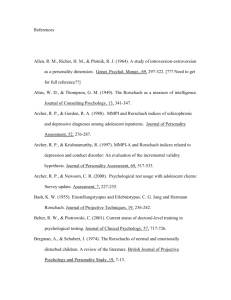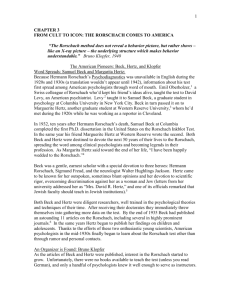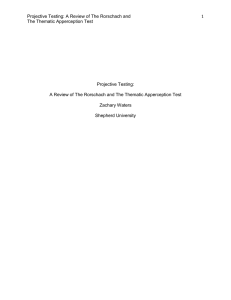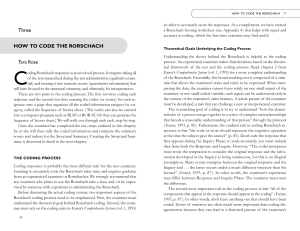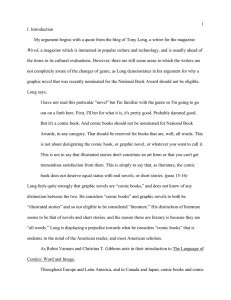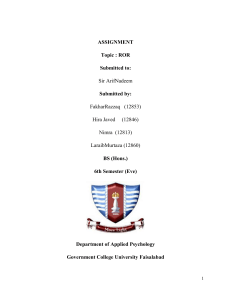Rorschach Short Story
advertisement
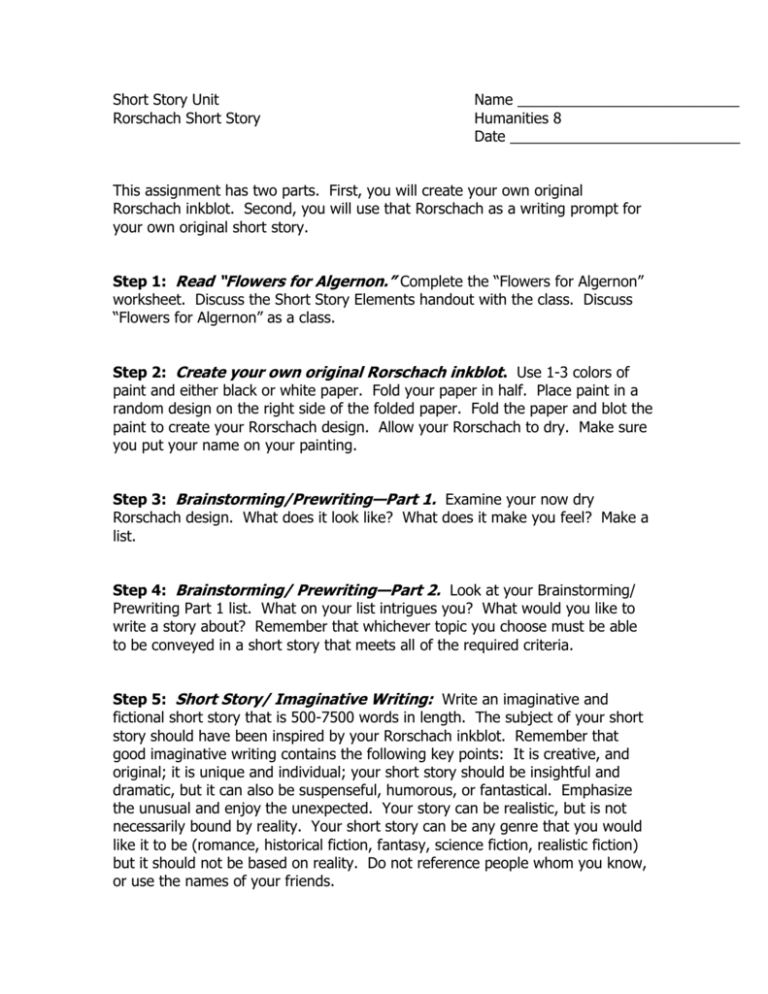
Short Story Unit Rorschach Short Story Name ___________________________ Humanities 8 Date ____________________________ This assignment has two parts. First, you will create your own original Rorschach inkblot. Second, you will use that Rorschach as a writing prompt for your own original short story. Step 1: Read “Flowers for Algernon.” Complete the “Flowers for Algernon” worksheet. Discuss the Short Story Elements handout with the class. Discuss “Flowers for Algernon” as a class. Step 2: Create your own original Rorschach inkblot. Use 1-3 colors of paint and either black or white paper. Fold your paper in half. Place paint in a random design on the right side of the folded paper. Fold the paper and blot the paint to create your Rorschach design. Allow your Rorschach to dry. Make sure you put your name on your painting. Step 3: Brainstorming/Prewriting—Part 1. Examine your now dry Rorschach design. What does it look like? What does it make you feel? Make a list. Step 4: Brainstorming/ Prewriting—Part 2. Look at your Brainstorming/ Prewriting Part 1 list. What on your list intrigues you? What would you like to write a story about? Remember that whichever topic you choose must be able to be conveyed in a short story that meets all of the required criteria. Step 5: Short Story/ Imaginative Writing: Write an imaginative and fictional short story that is 500-7500 words in length. The subject of your short story should have been inspired by your Rorschach inkblot. Remember that good imaginative writing contains the following key points: It is creative, and original; it is unique and individual; your short story should be insightful and dramatic, but it can also be suspenseful, humorous, or fantastical. Emphasize the unusual and enjoy the unexpected. Your story can be realistic, but is not necessarily bound by reality. Your short story can be any genre that you would like it to be (romance, historical fiction, fantasy, science fiction, realistic fiction) but it should not be based on reality. Do not reference people whom you know, or use the names of your friends. Your short story must also include and masterfully illustrate all of the short story elements: Setting—Where and when is your story taking place? What are the social conditions of your story like? What is daily life like for your characters? Is there a way to illustrate the “local color” of the setting of your short story? Plot—A short story should have one plot line. Decide how the sequence of events in your short story will progress. Will you give a full expositional introduction, or will you enter immediately into the rising action of the story? What will be the climax of your story? Will your story have a resolution? If so, how will it resolve? Conflict—What types of conflict will be in your short story? Will you have one central conflict, or several smaller conflicts? Will the conflicts be internal or external? Character—Who is your main character (protagonist)? Who is your antagonist? (Is your antagonist a person?!) What are the characteristics of your characters? What do they look like? What do they think and feel? How do others feel about them? Are your individual characters round, and individual and textured and dynamic? Do they change or are they static? Point of view—Will your short story be told from the first or third person point of view? Will your narrator be omniscient or limited? Theme—What is the important, underlying idea of your short story? How should your reader feel at the end of your short story? Will they be left feeling positive and hopeful or will they be pessimistic and disillusioned? How will you convey the theme of your novel? Will you use figurative language? Your short story must also meet the length requirements (500-7500 words.) You will also be scored on each of the writing criteria (Ideas & Content, Organization, Conventions, Sentence Fluency, Word Choice, Voice). Make sure you keep all drafts of your short story. You will be required to submit these early drafts and brainstorming activities along with your final draft. Be prepared to make multiple drafts of your short story and to submit your story to peer review.
